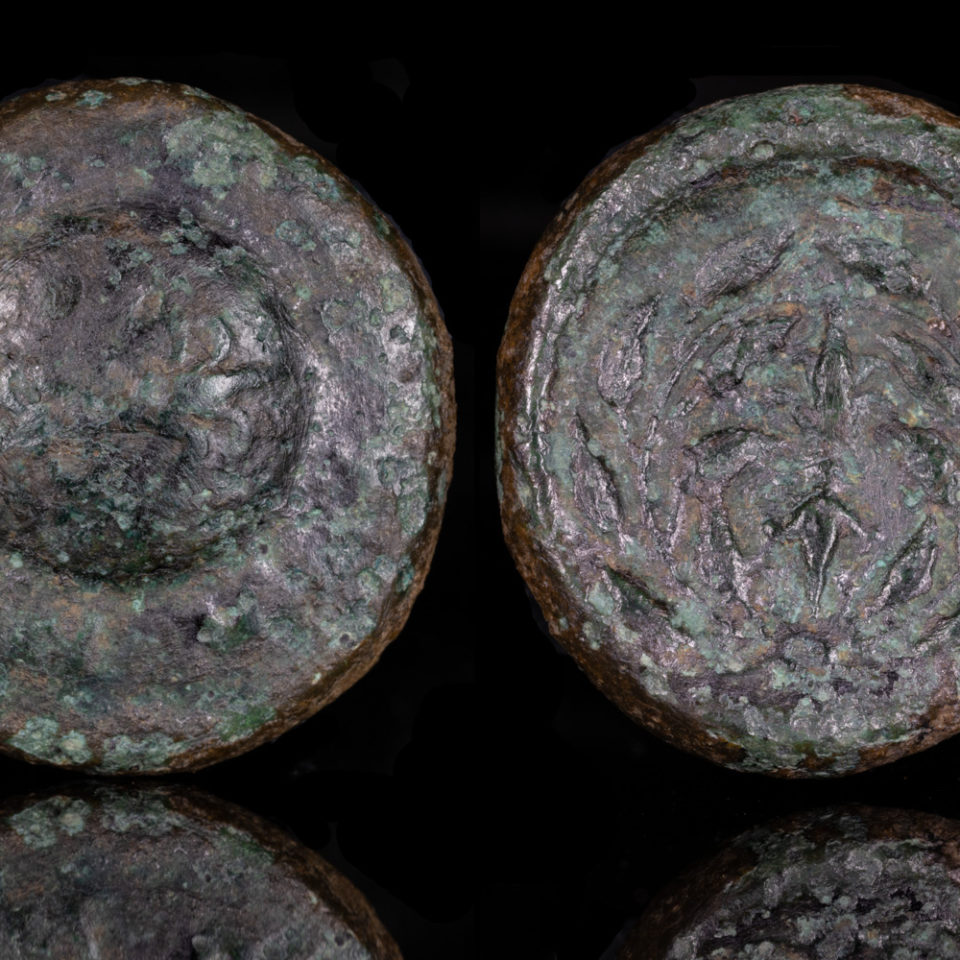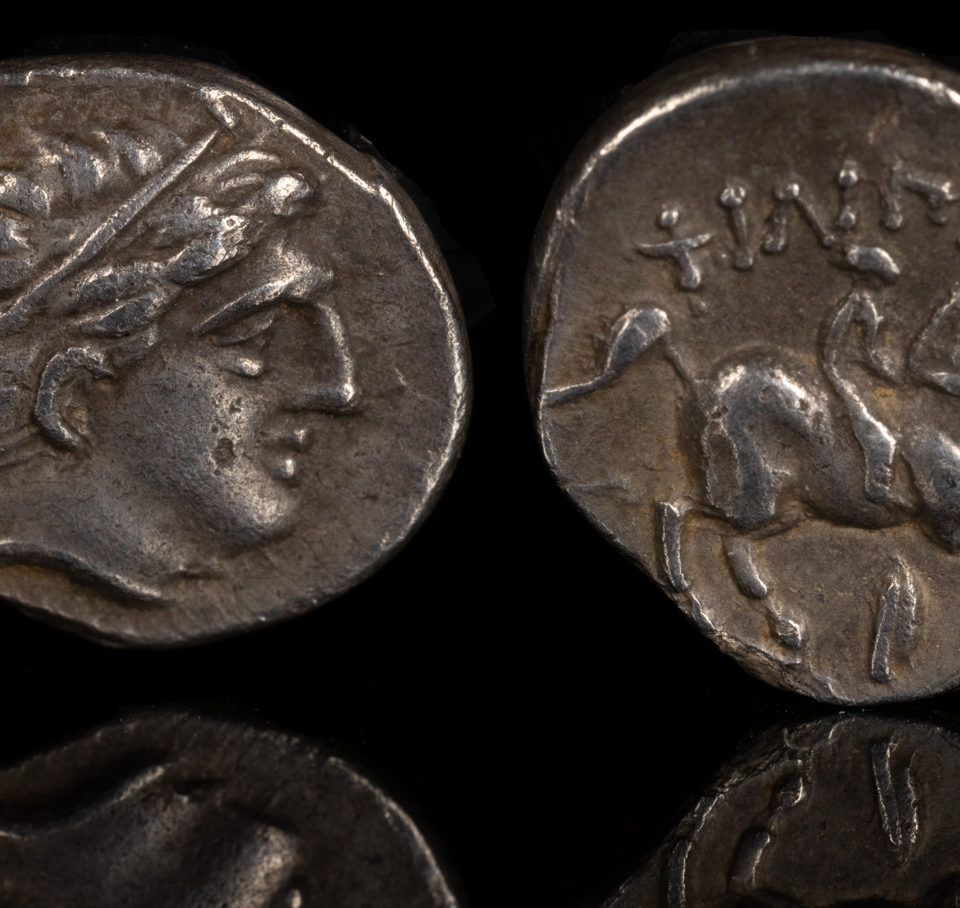Once upon a time (or more specifically, 332 BCE), there were four little Phoenicians.
The first little Phoenician was named Gerostratos of Arados. He built his city of stone on a small island off the coast of what is now Lebanon.

King Gerashtart (Gerostratos)
Dated RY 6(?) = 335/334 BCE 10.35g, 18mm, 10h.
Laureate head of Ba’al-Arwad to right / Galley to right with [Pataikos on prow], above waves; MA G and date (all in Phoenician) above.
Betlyon 29, note 106; DCA 753; HGC 10, 36
Ex collection of Z.P., Austria
The second little Phoenican’s name was Urimilk III, and his city was named Byblos. He had a very old city, who’s name became the Greek word for ‘papyrus’ and eventually became the root for our words ‘bible’ and ‘bibliography’. His city needed maintenance.
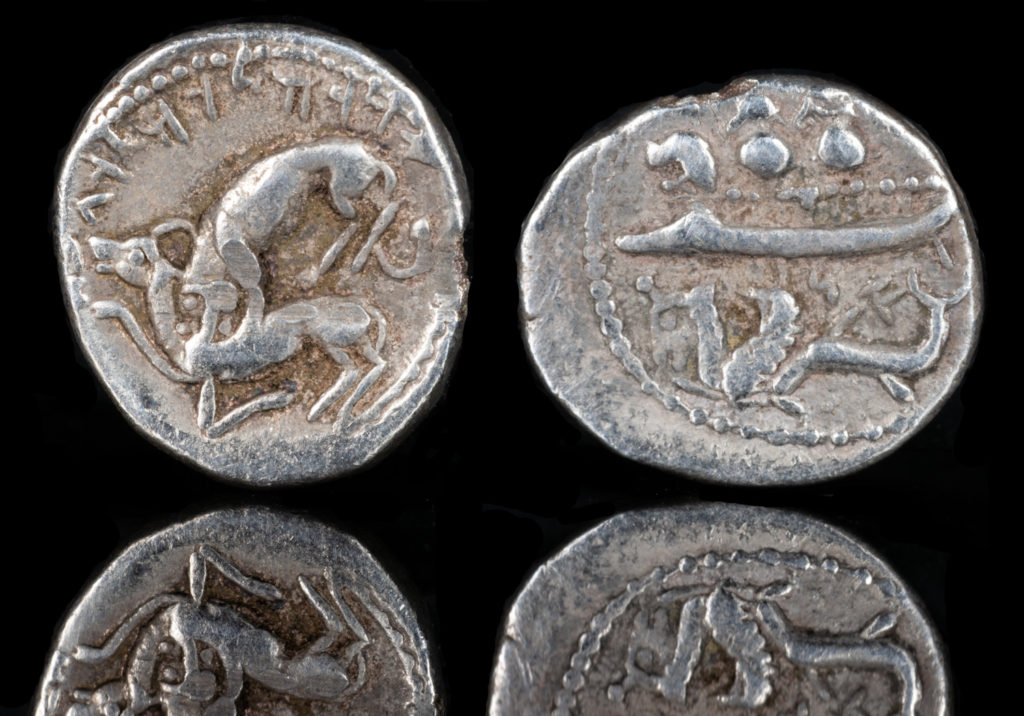
AR 1/16 Stater 0.87g, 11mm, 9h
Circa 333 BCE
Galley to left, containing two hoplites with helmets and round shields; below, Phoenician letters and hippocamp to left / Lion attacking bull to left, Phoenician inscription above. E&E-B Group IV.3.2; HGC 10, 137
The third little Phoenican lived in Sidon, and his name was Straton. His city used to be very grand, but his father had gotten into an argument with the Persians, and their king had knocked their city down and crucified his father. Tens of thousands had died, but he had rebuilt Sidon and it was doing better now.
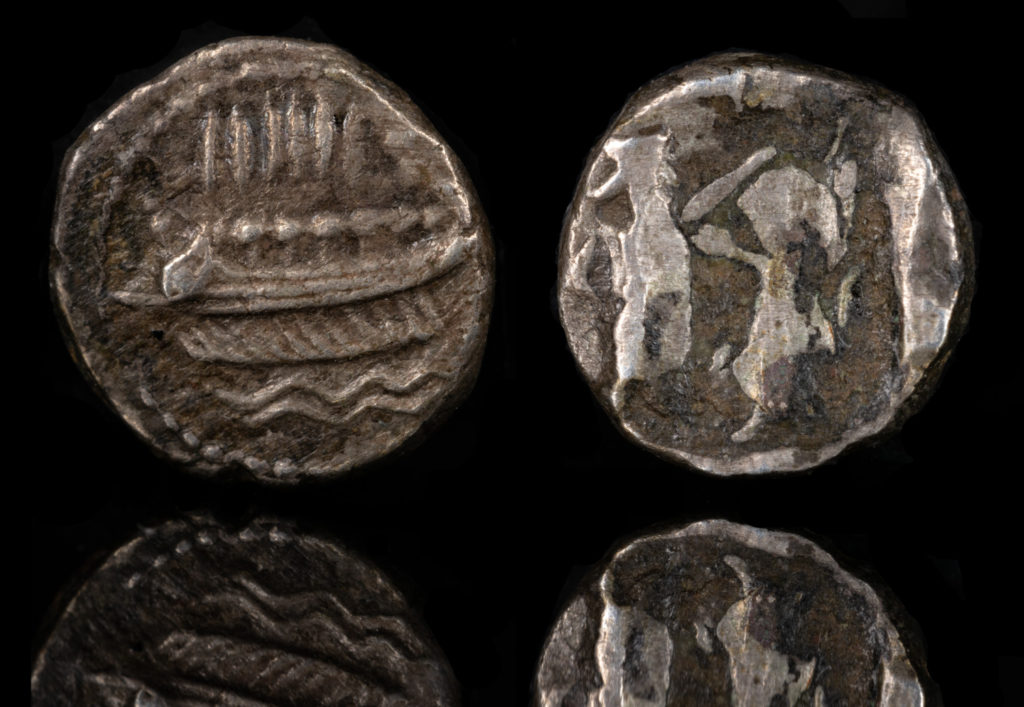
`Abd`aštart (Straton) I
dated RY 6 = 337/6 BCE 0.86g, 9mm, 12h.
Phoenician galley to left; IIIIII above, waves below / Persian king or hero, holding dagger and standing to right, fighting lion standing to left; [‘B] (in Phoenician) between; all within incuse square.
E&E-S Group IV.5.4.c; DCA 866; HGC 10, 263
Ex Gorny & Mosch Giessener Münzhandlung 2012
The fourth little Phoenician was Azemilkos of Tyre. His city was a half-kilometer off the coast with fifty meter high walls. In the last two thousand years, no one had conquered it, so Azemilkos slept very well at night.
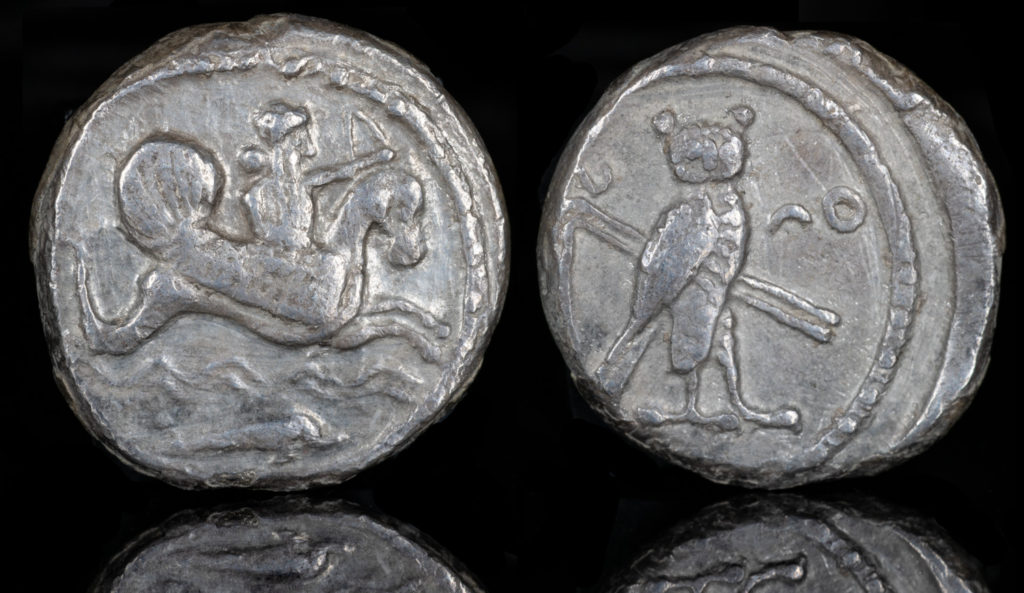
RY 10 = 340/39 BCE
Shekel Silver, 20 mm, 8.21 g, 12 h
Deity, holding reins in his right hand and bow in his left, riding hippocamp to right above two lines of waves; below, dolphin right.
Rev. Owl standing right, head facing; crook and flail in background; to right, date and ‘ (in Phoenician).
DCA 918. E&E-T 1146-8. HGC 10, 349
Ex collection of Dr. A. Drakul.
Then along came the big bad Alexander the Great. He hadn’t even reached Arados when Gerostratos‘ son met him on the road. “Let’s not get into all the huffing and puffing stuff,” said his son. “Here’s the keys to the city, the harbor, the spa, my house, and anything else you need. Arados is yours.”
Alexander was very happy, so he continued to Byblos. Urimilk III met him outside and surrendered the city. Alexander was excited to see this ancient city, then moved on.
At Sidon, Straton looked up from the rubble. “Sidon is yours,” he said. “Please don’t be mean like the Persians.” And Alexander wasn’t mean. He provided a governor to help rebuild the city, then continued to Tyre.
There, he asked to pray at a temple in the city, but Azemilkos refused to let the Macedonians in. “This city is impregnable,” said Azemilkos. “Do your worst.”
So, Alexander the Great huffed and he puffed and he besieged the city by land and water for nine months, during which he built a causeway to the island, then toppled the walls, destroyed the city, killed 6000 soldiers, crucified another 2000, and sold the rest into slavery.


